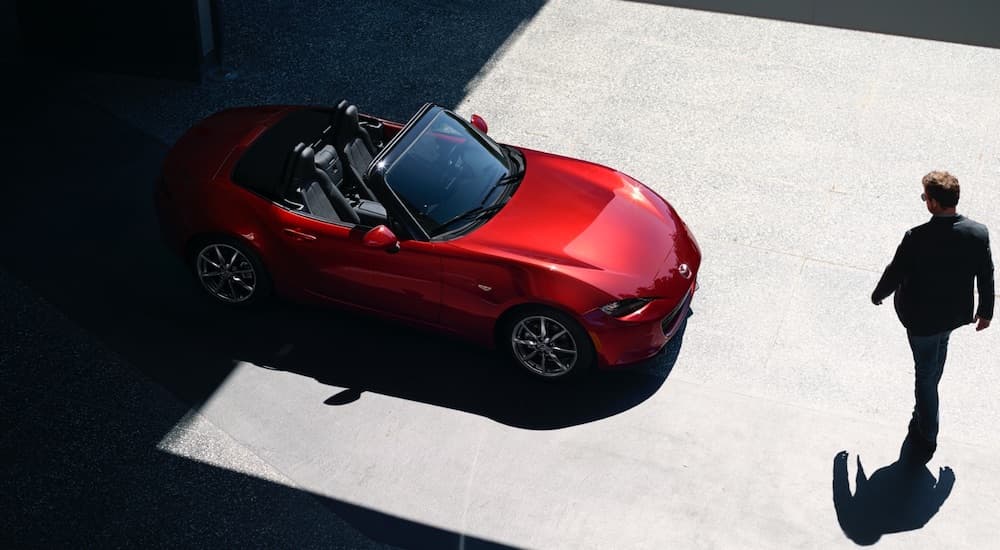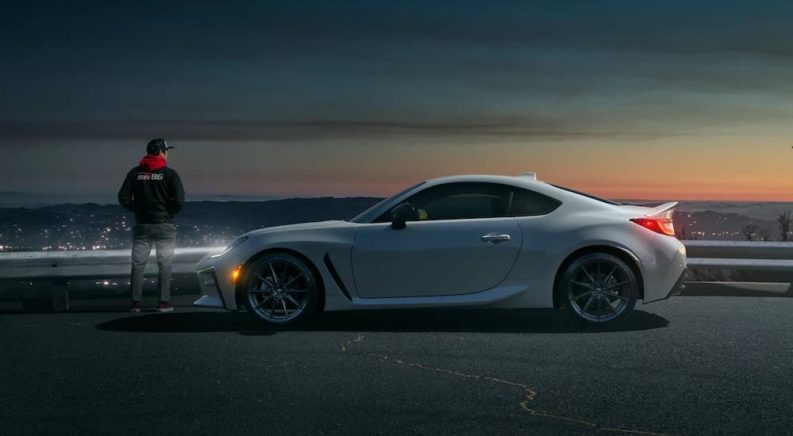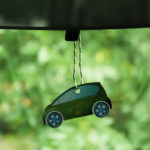Anyone who has spent enough time around true gearheads knows that the automotive world has its fair share of jargon. From “hooning” around with friends to giving your ride a “dab of oppo,” modding the “end can” on your “tuner” to firing up the “four-banger” or switching out the” slushbox” on your “sleeper,” these slang terms can almost start to sound like a different language. Of course, this phenomenon isn’t unique to the English-speaking world, with drivers around the globe having their own terminology when it comes to describing different automotive features, concepts, and ideologies.
Japan is a prime example of this trend, with a veritable dictionary full of terms that would make little sense to those outside the island nation. Japan has its own robust automotive culture owing to the number of leading brands that call the country home, from Toyota, Honda, and Nissan to Mazda, Mitsubishi, and Subaru. While smartphone-based language apps are all the rage these days, they often fail to touch on the terms that’ll help you fit in at the average Tokyo garage or auto show, but CarLifeNation is here to help with our guide to Japanese for car enthusiasts. Read on for a quick overview of some of the words and phrases that’ll help you to talk shop no matter what time zone you might find yourself in.
Jinba Ittai (人馬一体)
While some terms are used by Japanese car enthusiasts as a whole, others are specific to certain manufacturers. We wouldn’t exactly call these slogans in the vein of “Built Ford Tough” or Chevy’s “Like A Rock,” but they fulfill a similar role when it comes to marketing. Mazda’s Jinba Ittai is one such term, and while it literally translates to “person and horse as one body,” there’s a lot more to it than that. Borrowed from the ancient tradition of Samurai horse archery, the term describes the close relationship between a person and their means of conveyance.
While in the world of feudal Japan, this would refer to the important connection between a horse and its rider that was vital for accurate archery, Mazda has borrowed the phrase to describe the ideal of perfect harmony between a driver and their vehicle. “When the car and driver are in perfect harmony, driving is fun,” said Takeo Kijima, former program manager for the MX-5 Miata at Mazda Japan. “For instance, the location of the shift lever, whether it’s more in the front, off to the side, or farther back, will determine what muscles are used to operate it. We need to balance the amount of strength needed to feel oneness.” It’s an approach Mazda tries to take with all of its vehicles, and given the brand’s reputation for producing fun, responsive models, it’s working well.

Bosozoku (暴走族)
As long as there have been cars, there have been automotive subcultures. From greasers and hot rodders to overlanders and those dudes with airbrushed vans, American automotive culture is far from monolithic. The same is true in Japan, where vehicles lend a sense of identity and community, and the Bosozoku are one of the most notable subgroups. Literally translated as “violent running tribe,” Bosozoku is a youth-oriented subculture centered on heavily modified cars and motorcycles. Known for their recklessness and tendency to ignore the rules of the road, Bosozoku are immediately recognizable thanks to a few common modifications.
The most obvious would have to be the use of takeyari (竹槍 – “bamboo spear”) pipes, towering exhaust extensions that can be twice as tall as the vehicle itself. While impractical for any sort of driving, these gigantic pipes are ideal when it comes to fulfilling their true purpose: grabbing as much attention as possible. Hanging grab rings known as tsurikawa (つり革) are another common accessory, often pried off public trains before being mounted to a car’s bumper as an act of defiance. But few things define a Bosozoku vehicle quite as well as deppa (出っ歯 – “protruding tooth”) chin spoilers. While some modified vehicles might feature a modest chin spoiler that extends a few inches beyond the front bumper, the deppa commonly used by Bosozoku can jut literally feet into the road ahead. Again, it’s a less-than-practical modification, but it certainly turns some heads and allows Bosozoku to set themselves apart on the road.
Bippu (ビップ)
Of course, Bosozoku aren’t the only automotive subculture in Japan. While less focused on the sort of outlandish modifications common in the Bosozoku world, Bippu drivers are still easy to pick out from a crowd. Bippu style is all about modifying luxury sedans to include large, polished wheels, aggressive stance, and extremely low ride height. The word itself is born from the way the term “V.I.P” is pronounced in Japanese, which points to the refined, high-end nature of these vehicles.
The Bippu style was actually born out of the Bosozoku subculture and shares more than a few ties to the criminal underworld. When car modification culture began to grip Japan in the 1970s and 1980s, low-to-mid-level Japanese Yakuza gangsters embraced the Bosozoku style with loud, flashy rides. This was fine for the rank and file, but the upper echelons of Yakuza culture sought a less attention-grabbing way of riding in style, owing to the increased attention such modifications would surely bring from law enforcement. Richer, higher-level Yakuza popularized the Bippu style, allowing them to flaunt their wealth and power by upgrading their large, domestic sedans.
Aside from their low-slung style, Bippu vehicles are recognizable for their Oni-kyan (鬼キャン – “demon camber”), which describes the extreme negative camber that makes it look as if something has gone very, very wrong with the axle. In Oni-kyan, the wider, lower offset wheels and tires jut out towards the bottom, providing a distinctive look without the obnoxious flash of some Bosozoku design elements. Bippu cars are often decorated with Tsuna or Fusa knots––thick, rope-like decorations borrowed from Japanese temples and religious ceremonies and suspended from the rearview mirror. These symbols of protection and fortune provide an understated flourish for drivers embracing the Bippu style.
Hippari (引っ張り)
No mechanic would ever recommend stretching a smaller tire over a wider rim, but hey, there’s no accounting for taste. Hippari tires are a popular modification with some Japanese car enthusiasts. The difference in width causes the sidewalls to stretch and give the tires a unique, low-profile stance with improved sidewall rigidity. This can come in handy for some drifting applications, giving drivers better throttle response and steering feel with less body roll when cornering. Drivers can replicate the feel of higher-end tires on a budget as the narrower tires used in the hippari style tend to be cheaper than the purpose-built options. These stretched-out tires also help drivers to clear lower fenders and run wider, lower offset wheels, but again, they’re far from the most practical option on the table.
Kaizen (改善)
Though not specific to automotive culture, kaizen or “continuous improvement” is an important concept in the world of Japanese car manufacturing. It’s hard to deny the runaway success that is the Japanese automotive industry, which rose from the ashes of World War II to become one of the most productive and influential forces in the industry. Kaizen has played a big part in that success, ensuring top-quality products while reducing waste and improving efficiency. Literally translated as “good change,” kaizen embraces the idea that a product should never stop being improved and empowers workers to point out potential upgrades wherever possible. Kaizen has become one of the guiding principles for major brands like Toyota, allowing the automakers to quickly identify issues, improve best practices and humanize the workplace.
Itasha (痛車)
Ever wish your car could look a little more like an anime body pillow? Then itasha cars might be just what you’re looking for. Decorated with all-over wraps, stickers, and paint jobs that feature popular anime, manga, or video game characters, the cartoonish exterior doesn’t take away from the high-performance vehicles lurking underneath. The best part? Itasha literally translates to “painful” or, more accurately, “cringe-worthy,” as even the most hardcore anime fans recognize the awkwardness of displaying your fictional, animated crush to every other driver on the motorway.
Dori (ドリ)
Of course, no rundown of Japanese automotive terminology would be complete without the inclusion of dori––drifting. The technique is thought to be pioneered in Japan in the 1970s by professional motorcycle road racer, racing driver, and team manager Takahashi Kunimitsu, though others have also claimed credit. While it might not be the quickest way to take a corner, it’s certainly one of the most thrilling, with the tire-smoking technique becoming synonymous with Japan in the West thanks to pop culture gems like the 2006 movie The Fast and the Furious: Tokyo Drift.
Driver Keiichi Tsuchiya is commonly referred to as the first Dorikin (ドリキン) or “drift king” after years spent practicing as a Hashiriya (走り屋) or street racer on the twisting mountain roads––touge (峠)–– throughout Japan. His exploits were captured in a hugely popular and influential 1987 drifting skills video called “Pluspy.” Tsuchiya later helped organize one of the country’s first official drifting events in 1988 and assisted in producing the cult-favorite car anime Initial D.
A Small Taste of Japanese Car Culture
That’s just a taste of some of the automotive terms specific to Japanese car culture, but it’s far from an exhaustive list. While some of these concepts can be found the world over, others carry a uniquely Japanese flair and go a long way in speaking to the larger history and culture of the nation as a whole. In the end, language reflects the people who use it and can serve as a unique way to gain insight into a culture that, on its surface, might seem miles away from one’s own. With their focus on flashy, heavily modified rides, adrenaline-pumping pursuits like drifting, and an emphasis on harmony and continual improvement, it’s easy to see that Japanese car culture isn’t terribly different from our own. While it’s easy to reduce the country’s automotive impact to a few marquee models and some cheesy Hollywood blockbusters, delving into some of the local language proves there’s a lot to learn when one starts breaking down the ideas, concepts, and attitudes of other cultures.





